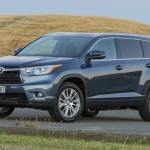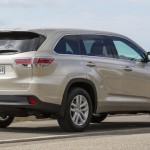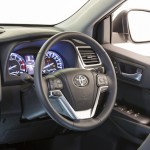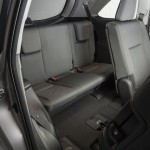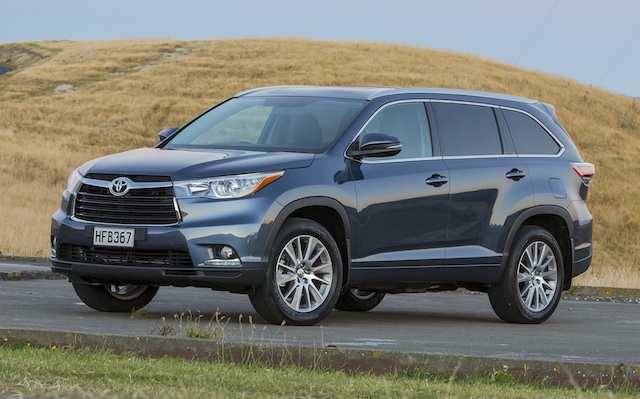
Former Toyota NZ chief Bob Field once said that an automotive franchise brand is worth the value that customers place on four basic things – products, services, value for money, pricing – and the contribution that brand makes to society.
“One could expect that brand reputation should correlate with sales results but only Toyota delivers that expectation,” said Field.
“One reason is that luxury car brand reputations are inflated by aspiration rather than from personal experience.
“Another reason is that some marques sell above their reputation because of lower pricing. In the long term, however, the brand value represents perceived customer value and is a strong indicator of growth potential.”
That was in 2007 when Toyota was the most valuable automotive brand in the world. It’s still the most valuable, ranked No. 1 in the 2014 global survey by London-based Brand Finance consultancy. The American survey group Interbrand has for the past three named Toyota as the best global green brand.
Much of Toyota’s success has had to do with brand value. It’s seen as reliable, innovative, trustworthy, accountable, sustainable … all adding up to ‘growth potential’ and its push for a worldwide cleaner and greener car fleet. Field was particularly committed throughout the past decade, calling for a special ‘fossil’ tax at the fuel pumps in New Zealand to get people into more energy-efficient vehicles. Not everyone agreed with him.
But the fact remains almost one in four New Zealand car buyers shop at the Toyota shop. Take, for example, the sales success of the Highlander SUV over the past 10 years. It first arrived in October 2003. Toyota sold 1214 before the second-generation model landed in August 2007. In the six-and-a-half years since, Toyota has sold 7836 Highlanders, or around 1200 a year. On average the SUV has accounted for around 6 per cent of Toyota’s annual sales.
That success has largely gone hand-in-hand with the growth in sales of SUVs. Back in 1998, SUVs occupied 8 per cent of the NZ market. In 2006 it was 17 per cent. Last year it was 27 per cent, or 30,478 SUVs – big, medium, small – out of 113,177 new vehicles.
That’s one SUV for every 3.7 vehicles, a ratio that tells of the changing needs of NZ car buyers and a reason why Toyota offers a premium front-drive Highlander in the new range: it’s for buyers who want a bit more luxury but don’t need all-wheel-drive, the very people who have abandoned large sedans for SUVs.
The third-generation line-up of Highlanders – this one made in the USA instead of Japan – arrived in NZ this week. Why the USA? Because part of Toyota’s new policy is to build its vehicles where most of them are sold. That way it helps to cut back on exports from Japan, hit hard by the yen’s strength against the US dollar and other currencies. Toyota repatriates fewer yen on profits from exports.
So what’s the new Highlander about? The usual gushy stuff in the press release is there, about how the front end is ‘chiselled’ and there’s an emphasis on ‘intricate sculpting of key panels on the sides and rear.’
In a nutshell, the new Highlander is a good-looking seven-seater that’s bigger than the outgoing model – 80mm longer and 15mm wider. Consequently, there’s more room inside for passengers. Trim and switchgear has gone more upmarket. On-road noise levels have been quietened. Indeed the SUV has been described as ‘impressively quiet.’
It comes in front-drive and all-wheel-drive in GX and GXL specifications. There are nine exterior colours. Under the bonnet is a slightly reworked version of the long-time Toyota family 3.5-litre petrol V6, delivering 201kW/337Nm and mated to a six-speed automatic gearbox. Both have been around for years.
The 2003 model Highlander used the same capacity engine. Back then it was rated for C02 exhaust missions of 270gr/km. The 2007 model also had much the same engine, although C02 had been cut to 259gr/km. Emissions in the third Highlander have been cut again, to 237gr/km for the two-wheel-drive and 246gr/km for the all-wheel-drive.
Cutting C02 from 270 to 237gr/km in 10 or so years to meet Euro5 emissions requirements is no great leap forward. Many other big-name carmakers have already complied with Euro6. But it’s a ‘greening’ of the product – and that’s one reason why the Toyota faithful will continue to worship at the Toyota altar. The Highlander range starts from $59,990.

